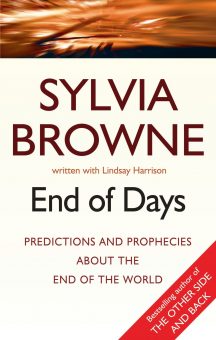He sat still as a thousand doubts, fears, memories, cravings, and temptations raged inside him, waging war with all the good he was longing to accomplish. He sat still through a violent storm that thundered all night through the forest. He felt his resolve strengthen and his meditative serenity engulf him. Finally he reached out with his right hand and touched the ground, which quaked and trembled and roared at his touch, asking Mother Earth for confirmation of the worth of his lonely pilgrimage with the words, “I, Earth, bear you witness!”
Throughout the night, as his deep meditation continued, he came to know how darkness of the mind is born, and how it is destroyed forever. He dispelled past, present, and future spiritual ignorance, and his delusion was transformed into total clarity. He gained complete understanding of “things as they are,” and when dawn broke, Prince Siddhartha had become Buddha Shakyamuni, the Enlightened One, whose ensuing teachings and divine revelations gave birth to Buddhism, with a current following that exceeds 665 million devotees.
The religion that Buddha’s life and enlightenment inspired involves being as active, self-propelled, and personally responsible as Buddha was in his quest for understanding “things as they are.” Followers are taught that if depth, meaning, and substance are missing from their lives, they’re not to look to Buddha for answers, or to the people around them. They’re to look to themselves and find their transformation within their own souls.
Buddha predicted that someday another Buddha would be born. Buddha Maitreya, who currently resides in the Tutshita, or heaven, waiting to be born again for one final time on earth. Before Buddha Maitreya’s arrival, Buddha Shakyamuni’s teachings would vanish, all memory of him would disappear, and even his sacred relics would be destroyed by fire. Only then would Buddha Maitreya appear, to renew Buddhism in the world and light the path to Nirvana, or the extinguishing of ignorance, hatred, and earthly suffering. Buddhist prophecies describe him:
He will have a heavenly voice which reaches far; his skin will have a golden hue; a great splendor will radiate from his body; his chest will be broad, limbs well developed, and his eyes will be like lotus petals. His body is eighty cubits high, and twenty cubits broad … Under Maitreya’s guidance, hundreds of thousands of living beings shall enter upon a religious life.
The time preceding Maitreya, according to the scriptures, would be recognizable by its hedonism, its sexual depravity, its general social chaos, and its widespread lack of physical health. And only a force as powerful as Buddha Maitreya will be able to shift the world into its next inevitable cycle.
Buddhists, in other words, don’t believe in an end of times. Instead, they agree with a universal cycle of creation, destruction, and then creation again, ushered in by a new Enlightened One who will bring peace and well-being, or Nirvana, to humankind right here on Earth.
The Baha’i Faith
In 1844 an Iranian merchant named Sayyid Ali Muhammad Shiraz, said to be a descendant of the prophet Muhammad, founded a religious movement that evolved into what we now know as the Baha’i Faith. Taking the title of the Bab, which translates to “the gate,” he gathered eighteen disciples around him, whom he called Letters of the Living, and sent them throughout the lands to share his message.
The Bab gained thousands of followers in the next few years, and attracted the attention of a few powerful detractors, including the Iranian prime minister, who had him imprisoned for fear that the Bab’s expanding power might interfere with the prime minister’s religious influence over the shah. It was during the Bab’s imprisonment in 1848 that he wrote The Bayan, his most important book of teachings. In the meantime, the Babis, as the Bab’s followers were called, were being attacked by various local armies whose religious leaders found them disruptive and threatening to their own beliefs.
Finally, in 1850, the prime minister and the shah decided that the most effective way of stopping this divisive new movement would be to eliminate its founder, the Bab himself.
Pages: 1 2 3 4 5 6 7 8 9 10 11 12 13 14 15 16 17 18 19 20 21 22 23 24 25 26 27 28 29 30 31 32 33 34 35 36 37 38 39 40 41 42 43 44 45 46 47 48 49 50 51 52 53 54 55 56 57 58 59 60 61 62 63 64 65 66 67 68 69 70 71 72 73 74 75 76 77 78 79 80 81 82 83 84 85 86 87 88 89 90 91 92 93 94 95 96 97 98 99 100 101 102 103 104 105 106 107 108 109 110 111 112 113 114 115 116 117 118 119 120




